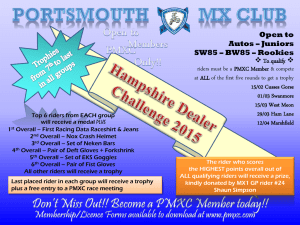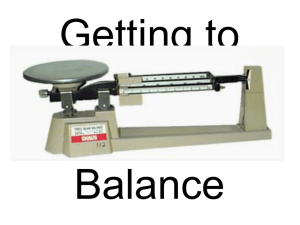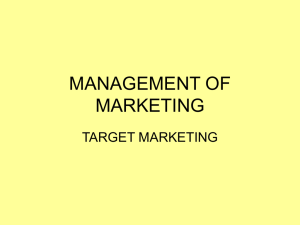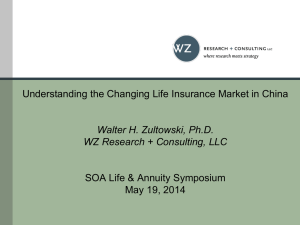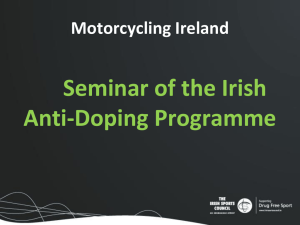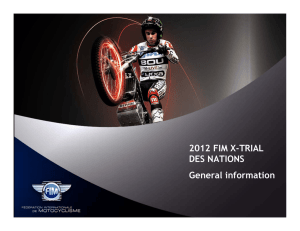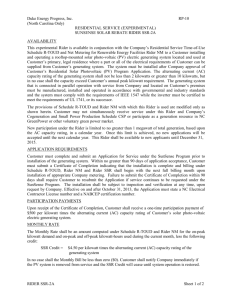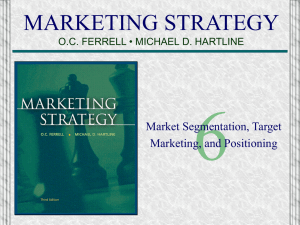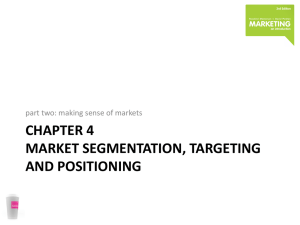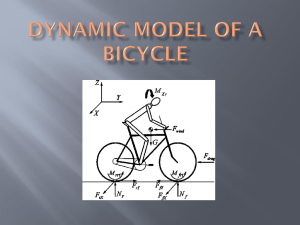9 - Paula - Application of GO Customer
advertisement
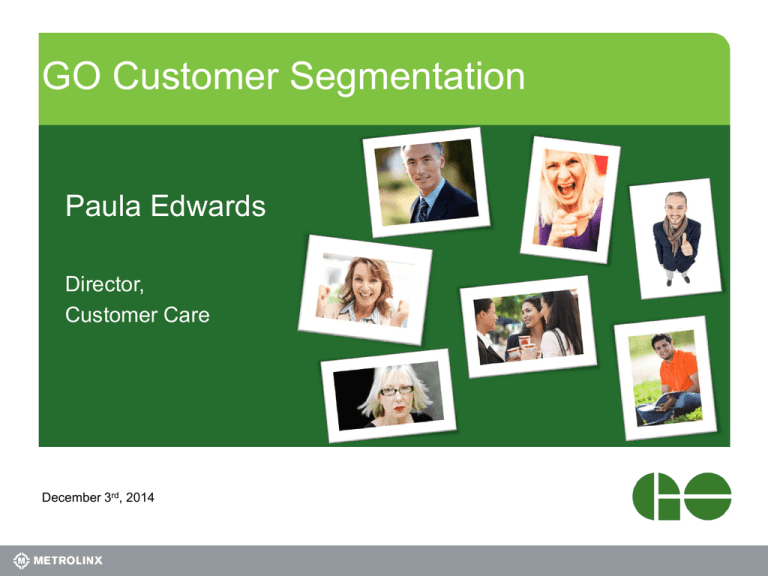
GO Customer Segmentation Paula Edwards Director, Customer Care December 3rd, 2014 GO Transit Today • • • • • • We serve 66 million passengers/year • 250,000 passenger/weekday GO connects with 17 municipal transit systems Rail: • 250 weekday trips • 67 locomotives; 586 bi-level coaches • 7 lines; 80% are GO owned Bus: • 2,516 weekday trips • 500 buses (including 116 Double Decker buses) 78 stations/terminals 72,700 parking spaces Mission: To deliver a customer-first transportation service Turning Point for Customer Service • 88% train on-time performance in 2008/09 • Negative public and customer perception • Focus on operations and safety often compromised customer service • Lack of customer engagement • Led to a 3 year Customer Service Strategy that was approved in 2009 and our Passenger Charter Passenger Charter Promises 1. We will do our best to be on time 2. 3. 4. 5. We will always take your safety seriously We will keep you in the know We will make your experience comfortable We will help you quickly and courteously 4 The voice of our customers help us keep our promises • Invested in Voice of the Customer program to engage customers, listen to and act on their feedback • Launched on online panel to gather insights easily and in a cost effective way • Engaged the organization to incorporate customer insights into planning and decision making • Close feedback with customers – “You spoke, we listened” Customer Insights Inform Training Customer Service Employee Training Roadmap Timelines 2014+ 2014 – 2013 Understanding Our Customers • Usage and Attitude (Non-Users) • Mystery Shopping • Customer Experience Mapping 2013 – 2011 • GO Customer Segmentation 20112010 • Passenger Charter Focus Groups GO Customer Segmentation • In 2012, we completed a market segmentation study to better understand our customers and ultimately improve how we communicate and serve them. • From this research we uncovered 7 distinct personas: “happy” “businessman” “sensitive” “student” “hip/cool” “highly dissatisfied” “social” 7 Our Customer Segments “I like GO – I feel privileged that I don’t have to take local transit like my friends. However, it would be really helpful if there was more service. ” “I really enjoy my time on GO as it helps me spend time with my buddies.” “I really like GO as it is clean, reliable and environmentally friendly. However, I find that service does not cover my area well or frequently enough.” Student rider Social rider 9% 10% Hip rider 26% “I absolutely love GO as it gives me time to be all by myself allowing me to decompress and feel relaxed.” 9% Highly dissatisfied “I really don’t have many rider positive things to say about GO other than that I like the free parking. I find it crowded, expensive, boring and frequently delayed.” Happy rider Sensitive rider 18% 11% 18% Working rider “GO helps me avoid traffic jams which I hate. However, I’m not the biggest fan of GO as I find it crowded and many fellow passengers not courteous.” “I have a pretty positive experience on GO and being a businessman, it helps me catch up with work during my daily commute. However, I would appreciate better seat availability.” How We’ve Been Applying Segmentation • The personas have been shared across the organization and have been applied in many different ways: – Improving Research Processes and insights – Training Employees – Launching New Service – Designing Products – Launching New Programs – Targeting Marketing Campaigns 9 Improving Research Processes • Segmentation has been applied to our main research methodologies • We’ve been able to determine the segment for each of our 7,000 members of Let GO Know. • As well, we make sure research findings are as representative as possible. – For instance, every focus groups has to have a mix of segments 10 Training Employees • Customer segments are foundational and have been embedded into employee training. • Employees are shown techniques on how to spot personas, anticipate needs, and communicate. Creating an easy and delightful experience • Given a pocket-sized handbook that they could use in their day to day role. • Staff saying the personas give a “new perspective” and they now “have a greater understanding of passenger needs.” • Since the program has launched our commendations have increased by 21%. 11 Designing Products – GO Mobile Website • Insights from customer segments were used to map the user experience and ensure that needs were met at key points in the journey. • For example, knowing the behaviours and needs for 4 segments led us to include pathways for special events planning, commenting to GO directly, and posting on social media. Planning Needs Post-Trip Needs 12 Launching New Programs - Quiet Zone • When we launched a Quiet Zone onboard our trains we knew that we were going to delight all by one segment of our riders • Feedback from our “social” rider during the pilot helped us make refinements for the full system rollout 33% Of ‘social riders’ wanted to keep the Quiet Zone during the pilot 48% Of ‘social riders’ wanted to keep the Quiet Zone during the full rollout Overall, 82% of all customers love the Quiet Zone 13 Targeting Marketing Campaigns • Created a campaign to increase awareness and usage of our online tools • Identified 3 segments with low usage and developed targeted approach • Results: • 1,300 more On the GO email subscribers (and over 10,000 since launch) • 75% increase in use of GO Tracker that has been maintained since launch • 7 point improvement in customer satisfaction 14 Progress so far Year to Date 2009 2014* Change Satisfied with GO Transit 59% 84% +25 pts Recommend GO to a friend or colleague 63% 84% +21 pts Number of Customer Commendations** 623 1,533 +146% * Results are based on the Fall customer satisfaction survey 15 Thank you www.gotransit.com
